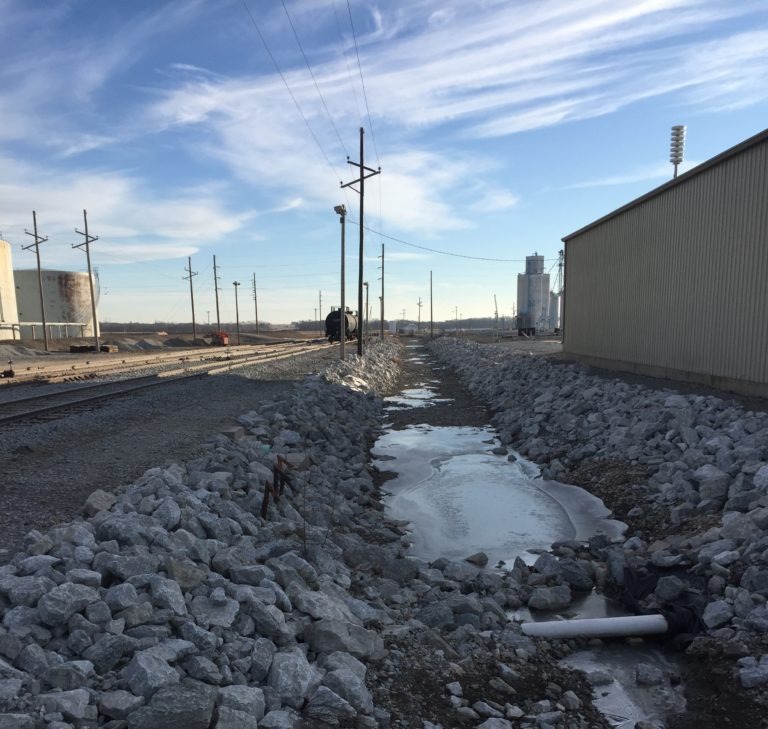Stormwater Channel Restoration
Nebraska
Location
Kyle Kukuk
Contact
Service Lines
Project Summary
Blackstone Environmental provided water resource engineering to an industrial facility in Nebraska to assist in replacement of an undersized storm water culvert and restoration of channel riprap lining and vegetation.

An existing channel crossing the culvert system, which consisted of multiple circular corrugated metal pipes, did not provide adequate hydraulic capacity or have the ability to pass woody debris downstream. The existing culverts needed replacement, and the client requested a box culvert to improve hydraulic capacity through the channel. Existing channel banks downstream of the culvert crossing were eroding due to lack of riprap and exposure to the elements over many years. The native soils are highly erodible, which was evident in multiple areas of the storm water channel.
Services Provided
This project included water resource engineering, streambank stabilization and Corps of Engineers environmental permitting.
- Blackstone designed a new concrete box culvert for an access road crossing for the main storm water channel running through the facility. The existing culvert was undersized and was not able to pass large woody debris and vegetation from upstream agriculture fields.
- Blackstone also provided streambank stabilization design for the eroding banks of the storm water channel including riprap lining and establishment of vegetation on the slopes.
- Blackstone worked with the Corps of Engineers in Omaha to get the project successfully permitted and approved for construction.
Results
The culvert and riprap lined channel banks have provided the facility adequate hydraulic capacity in the storm water channel to handle normal seasonal flows through the creek. The riprap lining has provided protection from erosive events, and the new culvert provides additional flow area for woody debris to pass through the channel without being held up at the crossing.